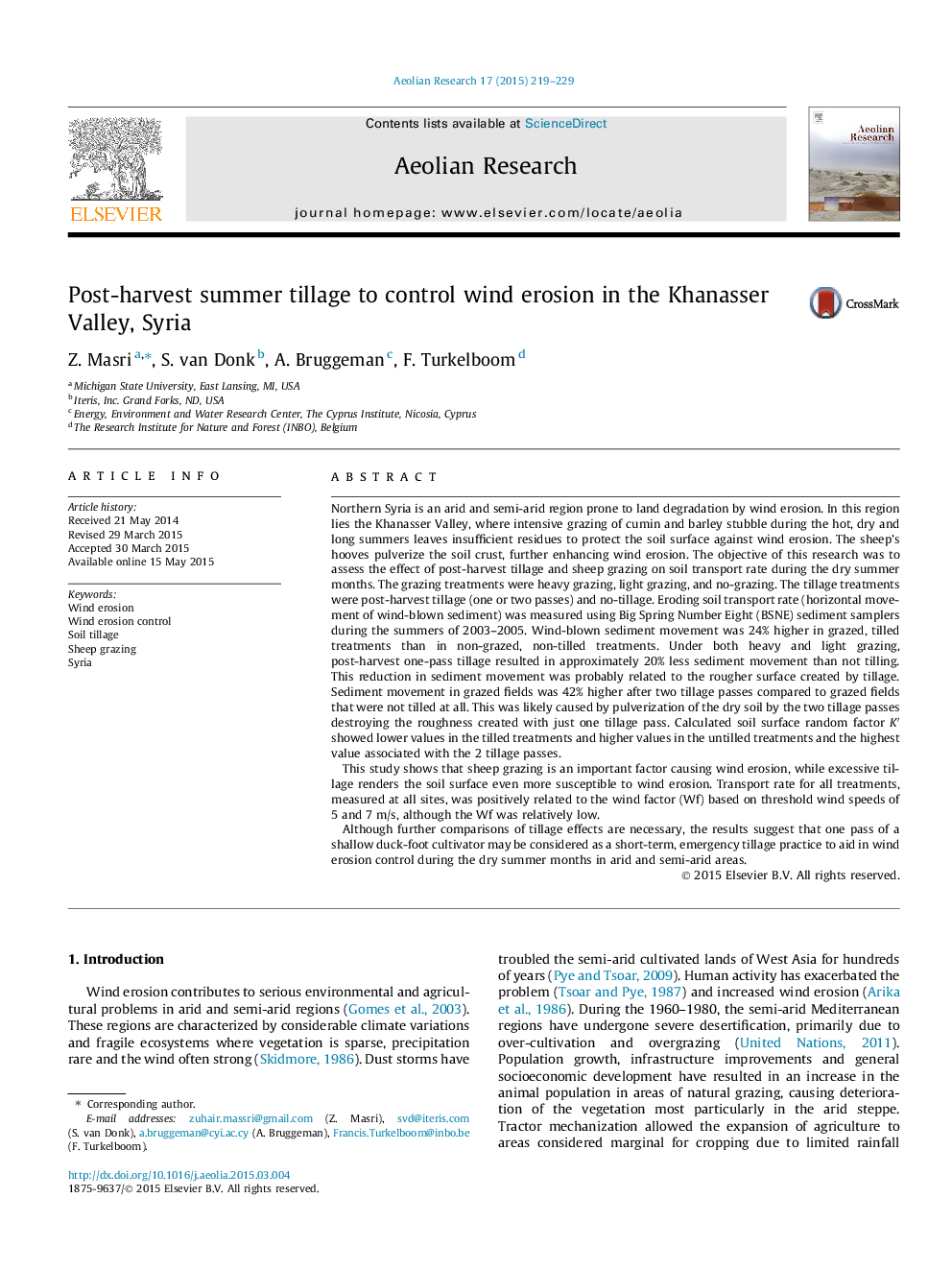| کد مقاله | کد نشریه | سال انتشار | مقاله انگلیسی | نسخه تمام متن |
|---|---|---|---|---|
| 4673766 | 1634110 | 2015 | 11 صفحه PDF | دانلود رایگان |
• The post-harvest tillage enabled the farmers to reduce the wind erosion and increase soil moisture.
• Higher transport rate reported in the grazed and tilled cumin fields in 2003 and 2004 seasons.
• Twice-tilled fields significantly increased the transport rate in 2005.
• Values of wind speed >7 m/s were lower and enough to induce wind erosion Vs speed >5 m/s.
• Post harvest summer tillage created soil surface conditions less susceptible to wind erosion.
Northern Syria is an arid and semi-arid region prone to land degradation by wind erosion. In this region lies the Khanasser Valley, where intensive grazing of cumin and barley stubble during the hot, dry and long summers leaves insufficient residues to protect the soil surface against wind erosion. The sheep’s hooves pulverize the soil crust, further enhancing wind erosion. The objective of this research was to assess the effect of post-harvest tillage and sheep grazing on soil transport rate during the dry summer months. The grazing treatments were heavy grazing, light grazing, and no-grazing. The tillage treatments were post-harvest tillage (one or two passes) and no-tillage. Eroding soil transport rate (horizontal movement of wind-blown sediment) was measured using Big Spring Number Eight (BSNE) sediment samplers during the summers of 2003–2005. Wind-blown sediment movement was 24% higher in grazed, tilled treatments than in non-grazed, non-tilled treatments. Under both heavy and light grazing, post-harvest one-pass tillage resulted in approximately 20% less sediment movement than not tilling. This reduction in sediment movement was probably related to the rougher surface created by tillage. Sediment movement in grazed fields was 42% higher after two tillage passes compared to grazed fields that were not tilled at all. This was likely caused by pulverization of the dry soil by the two tillage passes destroying the roughness created with just one tillage pass. Calculated soil surface random factor K′ showed lower values in the tilled treatments and higher values in the untilled treatments and the highest value associated with the 2 tillage passes.This study shows that sheep grazing is an important factor causing wind erosion, while excessive tillage renders the soil surface even more susceptible to wind erosion. Transport rate for all treatments, measured at all sites, was positively related to the wind factor (Wf) based on threshold wind speeds of 5 and 7 m/s, although the Wf was relatively low.Although further comparisons of tillage effects are necessary, the results suggest that one pass of a shallow duck-foot cultivator may be considered as a short-term, emergency tillage practice to aid in wind erosion control during the dry summer months in arid and semi-arid areas.
Journal: Aeolian Research - Volume 17, June 2015, Pages 219–229
